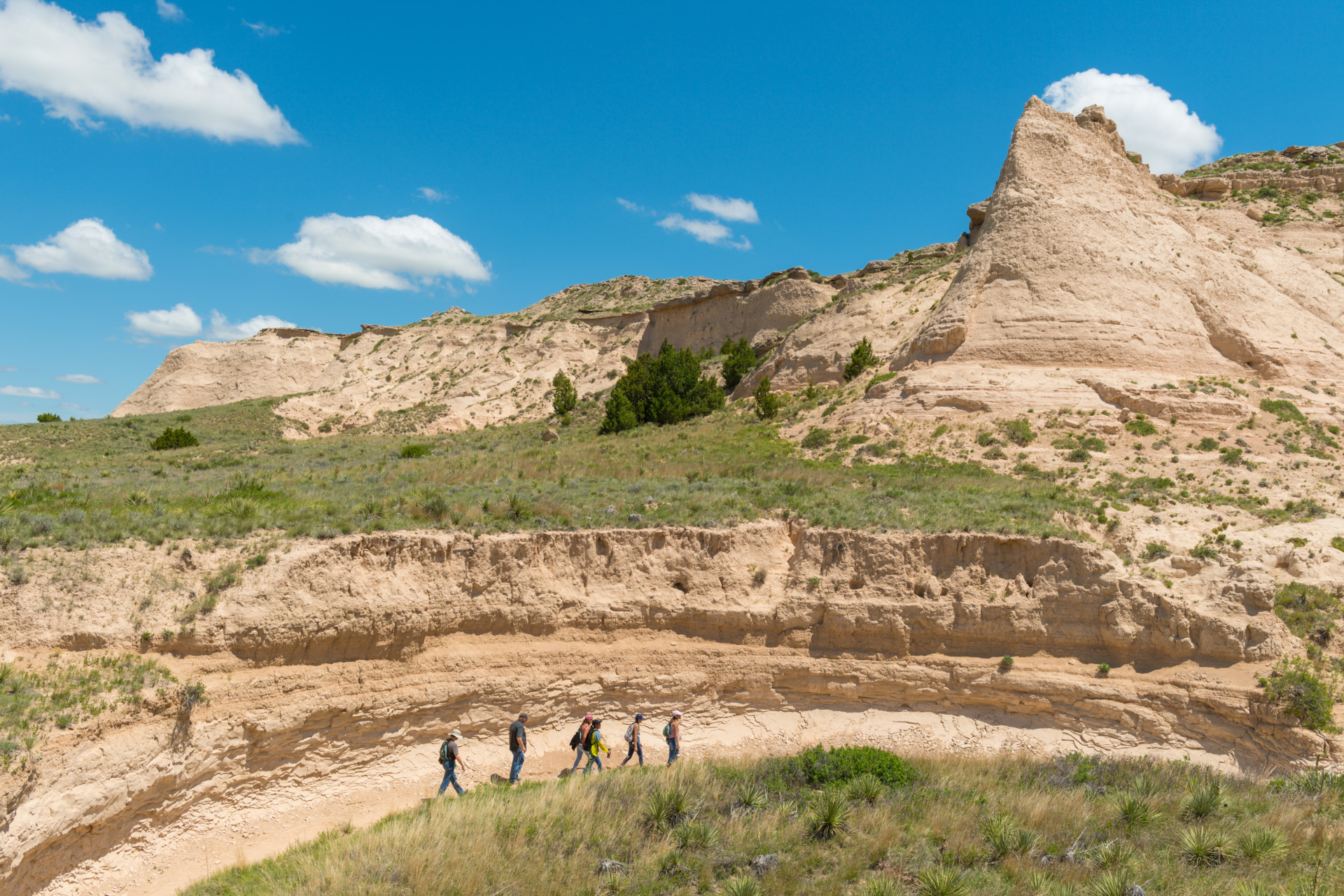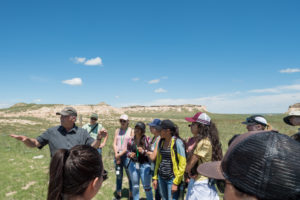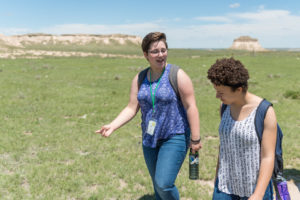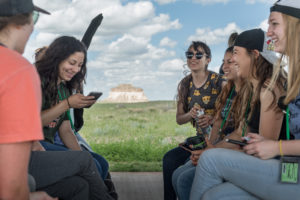
Pawnee National Grassland served as a classroom for 21 Colorado high school students in the Warner College of Natural Resources/Alliance STEM Institute. Photo: William A. Cotton/CSU Photography
“It looks like eyelashes,” someone said.
“It kind of makes the prairie look blue, I think,” added another student.
And they ran their fingers along the wisps while ecologist John Moore told them about the grass – Blue Grama, Colorado’s state grass.

What 21 Colorado high school students learned about nature and themselves during a weeklong visit to Colorado State University this summer will give them knowledge and confidence to become lifelong explorers of the outdoors.
For the second time, Warner College of Natural Resources hosted 9th-12th graders as part of the Alliance STEM Institute, with a focus on Earth science and sustainability. CSU’s Access Center Alliance Partnership works to find students from across the state who are eager to learn more about college.
Many of the students will be the first in their family to attend college. The Alliance Partnership establishes programming and activities that lend insight into the college experience while encouraging independence, exploration, and moving beyond comfort zones.
CSU works with 10 Colorado public high schools and communities through the partnership to uphold the message that all students can pursue an education beyond high school.
Engaging with the environment
During the students’ stay, the organizers provided impromptu lessons about differential erosion, Yucca plants, and wild onions.
Some lessons were taught with a backdrop of iconic buttes where blue sky meets golden prairie, while others took place in the mountains at 9,000-plus feet.

“Going in, I had no idea what to expect,” said Erin McGrew, a junior at Fort Lupton High School. “We spent most of our time outside gaining practical experience in careers related to earth systems and sustainability. We discussed plant life, geological formations, and the role that water plays in shaping our environment. I was given the opportunity to engage with my environment in a way that I never thought possible for an “‘inside person’ such as myself.”
Moore, who is head of the Department of Ecosystem Science and Sustainability at Warner College and the director of the Natural Resource Ecology Laboratory, works with the Department of Geosciences to host this experience. Geoscientist Sean Bryan was on hand during the grasslands trip, for example, to teach students about the geological wonders of the buttes.
A team of Warner College faculty, staff, and student mentor volunteers lend a hand in welcoming the students. Moore is a University Distinguished Teaching Scholar with a passion for student access, and the Alliance STEM program is important to him both as an educator and as a steward of the earth.
Many others make the program a success, including Kaye Holman, academic success and internship coordinator for the Department of Ecosystem Science and Sustainability, and Amanda Morrison, a research associate with the Natural Resource Ecology Laboratory. Morrison accompanied the students on hikes to share knowledge and answer questions.

“The outdoors welcomes everyone,” Moore said. “We should, too. Grants and donors help us fund this program so the students don’t have to. It’s important for the future of natural resources education and work.”
During the week, students lived in a residence hall and visited CSU’s Recreation Center. They toured Warner College labs and CSU’s Environmental Learning Center, watched natural resources documentaries, and even read an excerpt from James Michener’s “Centennial” to get excited about a trip to the Pawnee Grasslands, where they stood in the middle of the landscape the author describes. Early-week learning prepared students for a multi-day trip to CSU’s Mountain Campus.
It begins with a circle
While the week ended at higher elevation, it began in a circle. Students spent their first evening on campus in a talking circle to begin feeling comfortable with each other and to set intentions for the week ahead. Patricia Vigil, director of University Partnerships and Student Success, explained that there is a real value in students setting guidelines for themselves, encouraging positivity, and then choosing what to take away from the experience.
Melina Harris, a junior at Hinkley High School in Aurora, said that she appreciates the exposure to ecology and geology and thinks the general knowledge will be helpful in the future. But what she really appreciates is her new relationship with nature – even bugs.
“The best part was being outdoors,” she said. “I had never been hiking before and we saw so many cool things along the way, like moose. I have a better appreciation for nature and I have lessened my fear of bugs. That’s extraordinary.”
To learn more about Alliance Partnership programs through the Warner College of Natural Resources, contact Kaye Holman.